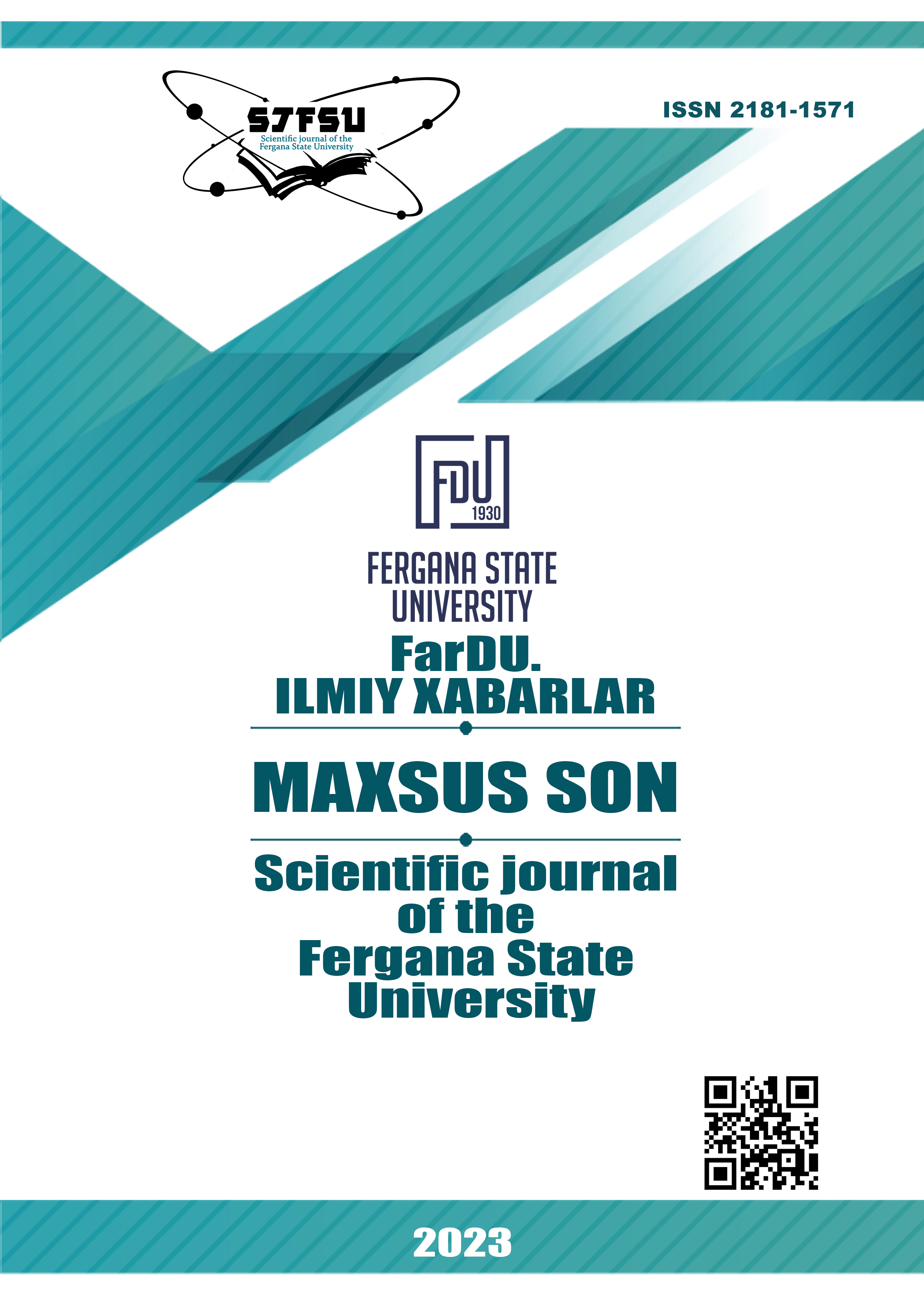THE SIGNIFICANCE OF TEXT AND DISCOURSE IN ENHANCING COMMUNICATIVE COMPETENCE
Keywords:
Text, discourse, language, morpheme, sentence, grammar, cohesion coherence, terms, equivalent, communicationAbstract
The given article deals with the significance of text and discourse in developing communicative competence of students who are learning English as a second or as a foreign language.
Text and discourse are indispensable aspects of linguistic forms. Various researches on text and discourse have been made by linguistic exponents. Discourse analysis can be applied to any text, that is, to any problem or situation. Every text is conditioned, and inscribes itself within a given discourse. Discourse analysis will, thus, not provide absolute answers to a specific problem, but enables us to understand the conditions behind a specific "problem" and makes us realize that the essence of that "problem", and its resolution
Text and discourse are interrelated in terms of enhancing studentsʼ communicative competence.
References
Campbell, R. and R. Wales (1970). The study of language acquisition in Lyons 1970.
Chomsky, N.(1965). Aspects of theory of syntax. Cambridge : Mass.: M.I.T. Press.
Harris,Z. (1952). Discourse analysis. ʼLanguage 28,reprinted in Fodor and Katz 1964.
Hymes, D. (1971). On Communicative Competence.Philadelphia : University of Pennsylvania Press.
Lobov, W. (1969).The study of non-standard English. National Council of Teachers of English (U. S. A).
Widdoson, H.G. (1985).Exploration in Applied Linguistics. Hong Kong : Oxford University Press
Habibiloyevna, M. D. (2021). The Semantic Analysis of Slang in The Movie “School”. Journal of Pedagogical Inventions and Practices, 3, 83-85.
Habibiloevna, M. D. (2022). THE CONCEPT OF" DISCOURSE" IN THE INTERPRETATION OF FOREIGN LINGUISTS. American Journal of Interdisciplinary Research and Development, 7, 89-92.
Madazizova, D. H. (2016). Качества, необходимые успешному преподавателю иностранного языка. Ученый XXI века, (5-1 (18)), 28-29.
Madazizova, D. X. (2021). Some Linguistic Pecularities Of Slang. Scientific progress, 2(7), 1277-1278.
Xabibiloyevna, D. M. (2022). VARIOUS SCIENTIFIC APPROACHES TO ʼSLANGʻ. American Journal of Interdisciplinary Research and Development, 10, 303-305.
Xabibiloevna, D. M. (2023). Discourse and Discourse Analyses in Linguistics. Best Journal of Innovation in Science, Research and Development, 2(6), 31-36.
Xabibiloyevna, M. D., & Sirojiddin oʻgli, A. M. R. (2023). CLASSIFICATION OF DISCOURSE ACCORDING TO DISCIPLINE. XXI ASRDA INNOVATSION TEXNOLOGIYALAR, FAN VA TAʼLIM TARAQQIYOTIDAGI DOLZARB MUAMMOLAR, 1(5), 156-161.
Xabibiloyevna, D. M. (2023). FORMS OF DISCOURSE IN LINGUISTICS. TAʼLIM VA RIVOJLANISH TAHLILI ONLAYN ILMIY JURNALI, 3(6), 174-178.
Xabibiloevna, D. M. (2023). THE ROLE OF CONCEPT IN LINGUISTIC DISCOURSE. BARQARORLIK VA YETAKCHI TADQIQOTLAR ONLAYN ILMIY JURNALI, 3(6), 73-78.
Abdiloyev, S. O. (2023). Phraseologies In German Related To Animal Wildlife. PERFECT EDUCATION FAIRY, 1(1), 29-35.
Oxonjonovich, A. S. (2023). NEMIS TILIDA HAYVONOT DUNYOSI BILAN BOGʻLIQ BOʻLGAN FRAZEOLOGIZMLAR. BOSHQARUV VA ETIKA QOIDALARI ONLAYN ILMIY JURNALI, 3(11), 1-4.
Abdullayev, S. (2022). ACHIEVING THE RICHNESS OF ORAL AND WRITTEN SPEECH WHEN TEACHING A FOREIGN LANGUAGE. Oriental Journal of Social Sciences, 2(06), 34-39.
Qayumjonovich, A. O., & Bahodirovna, A. F. (2023). ORONIMLARNING O ʼZIGA XOS XUSUSIYATLARI. Scientific Impulse, 2(14), 136-140.
Аbbozov, О. Q. (2021). General properties of oronims. ISJ Theoretical & Applied Science,(12), 389-391.
Qayumjonovich, А. О. (2023). In Particular of the Formation of the Oronims. Intersections of Faith and Culture: American Journal of Religious and Cultural Studies (2993-2599), 1(10), 13-17
Downloads
Published
Issue
Section
License
Copyright (c) 2024 Scientific journal of the Fergana State University

This work is licensed under a Creative Commons Attribution-NonCommercial-NoDerivatives 4.0 International License.
Most read articles by the same author(s)
- Nargizaxon Umarova , Dilafruz Madazizova , INTERPRETATIONS OF THE CONCEPT "ARGO" IN LINGUISTICS , Scientific journal of the Fergana State University: No. 1 (2022): Scientific journal of the Fergana State University
- , POSSIBILITIES OF CONTAMINATION IN ARTISTIC AND TOURISM-ADVERTISING DISCOURSE , Scientific journal of the Fergana State University: No. 3 (2024): Scientific journal of the Fergana State University. Application set (Social humanities sciences)

